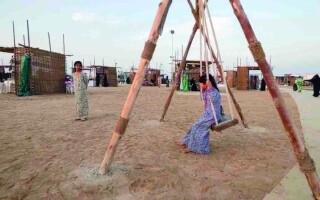
In the long centuries of history, Arab people have traditionally connected their lives with palm trees, which served not only as a source of food and materials for creating everyday objects and instruments but also were used for building housing. One of the most vivid examples of traditional architecture in the United Arab Emirates is the arish style – a style of construction that primarily focuses on the use of palm fronds as an important building material.
Most residences in the UAE in the past were specifically linked to this style of construction. Regardless of the evolution of life and the emergence of modern villas, homes in the arish style continue to remain present in our society. Often families revive them alongside modern homes or within their inner courtyards.
Projects inspired by the atmosphere of arish have become a manifestation of pride for this heritage and efforts to preserve it. Some developers have decided to incorporate this style into their projects, such as tourist attractions, restaurants, and shops of traditional crafts.
Along with its architectural significance, homes in the arish style served as places for strengthening connections between the communities of the region, creating a warm atmosphere around them. An important feature of these buildings is their ability to adapt to the harsh climate of the region, providing shelter from the heat and wind.
Today, despite the changes in society and construction, homes in the arish style remain popular in the United Arab Emirates. They often serve as gathering places under their shaded structures for meetings with family and friends. Demand for such homes is preserved in national events and cultural festivals, where they represent an integral part of the traditional culture of the region.














